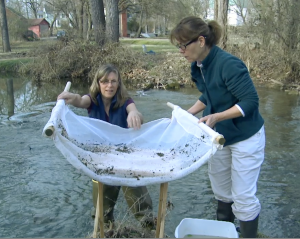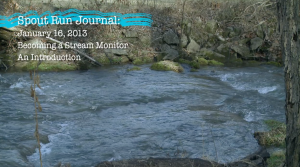A potentially record-breaking and damaging storm surge came down Spout Run earlier this month along with monsoon rains, just two days after this restored reach of Spout Run at Carter Hall spring below Millwood had been staked and seeded.
The Downstream crew joined stream restoration specialists, Seth Coffman and James Fulcher from Trout Unlimited, to document how well the site and intended improvements held up. It is estimated that over 130 cubic yards of sediment were deposited over the newly established flood plain area and kept from washing further downstream to the Shenandoah River and ultimately the Chesapeake Bay.
We love it when a plan comes together. Congratulations to Seth and James for a great design and execution.

